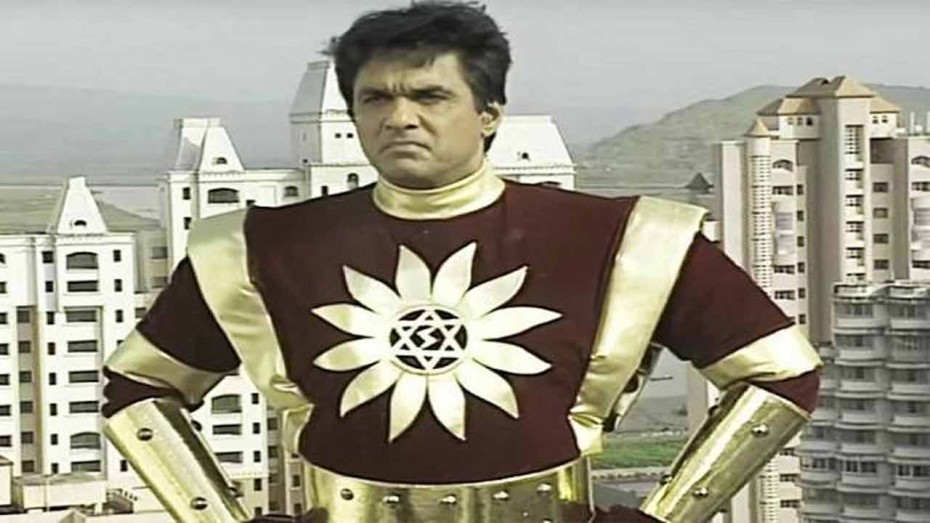
Instead, the artist’s work operates at the level of citation, foregrounding the basic effects, capacities, and textures of his charged source materials.
Shaktimaan photo insert page movie#
Both the television show and movie certainly deprioritize originality. In this case, it is not the Hindu-fication of a genre, rather it is an unfaithful copying of a specific film: the 1960 Hollywood romantic drama It Started in Naples, starring Clark Gable and Sophia Loren. Like Shaktimaan, the 1996 film English Babu Desi Mem, the source for the artist’s video work in the exhibition, English Babu Desi Mem (Flashback Cut) (2021), could be thought of as copying without citation an already existing work from the West. What is lost is the special effect, along with its production of an illusion, or a certain ideological instrumentalization of the special possibilities of a medium. In Faizal’s drawings, these special effects are excised from their context and media circulation, so they appear as muted, playful sketches. Where the visual effects of Shaktimaan are tricks of animation that occur in the post-production studio, the special effect of the carbon copy is of a different order, a mundane trick of the copy. Read this way, the character of Shaktimaan, and the show’s special effects, can be understood as fictions that arbitrate the interface between a specifically “Indian” nationalist project (with diasporic circulation) and the adoption of late-capitalist (American) exports, including economic liberalization. Where and how the special effect lands, and then eventually expires, is the result of historical and geopolitical forces. Today state-of-the art technologies, including moving-image special effects, are not only in use in Indian entertainment, but the many “silicon valley’s” and industrial nodes of the subcontinent are primary sites for their development and export.

Part of the economy of a special effect is the projection of contemporaneity-cutting edge, state-of-the-art, a certain sublime potential of artifice-all of which eventually wears off. Content is clearly deprioritized in relationship to the appearance of technical supremacy and achievement-part of the show’s primary appeal.Īlthough Shaktimaan was the first Indian television show to use special effects widely, its landmark use of effects ironically appears kitsch, even slapstick, from today’s vantage (or even by comparison to the effects of Hollywood just three decades prior). While no expense was spared on the television show’s effects, the narrative arcs are phoned in, simplistic, repetitive. Not surprisingly, Shaktimaan’s star and creator happens also to be an ardent and long-time supporter of the current political regime. The main character, a cardboard cutout of an American superhero painted with Hindu cultural signifiers and dubbed “Indian”, was both played and dreamed up by the same man, Mukesh Khanna. These special effects are the rhetorical centerpiece of a mass media product that centers a Hindu superhero who takes on the existential crimes of humanity (embodied in a chaotic cast of demons, villains, and regular everyday wrongdoers). Leaving the background and all else blank, the artist’s delicate drawings of every effect for each episode produce a soft taxonomy of decontextualized figures of the effects themselves. For each special effect, Faizal chooses a video still and uses multiple colors of carbon paper to isolate and trace the animation.
Shaktimaan photo insert page tv#
In the body of work Shaktimaan SFX (2020–ongoing), Nihaal Faizal uses sheets of carbon paper to trace and render the visual effects from Shaktimaan, the famous Indian superhero TV show from the 90’s.

Indeed, the material itself grounds the document’s special relationship to veracity-no matter how symbolic the signature or abstract the monetary transaction that it authenticates. Imprinted in the exact moment the original document is generated, the carbon copy emanates analog trustworthiness. And yet, in the old-guard offices of shops and businesses subsisting in anachronism, in bill books, for bureaucratic form-filing, and in more informal segments of various economic frontiers and holdouts, the tried-and-true analog of the carbon copy endures.Ĭarbon paper is a time-tested artifact, attesting to the changing technologies of record-keeping and concepts of verification.

A technology superseded: first by photocopies and then by the digital files of the computer.

The trace of carbon paper is a vanishing.


 0 kommentar(er)
0 kommentar(er)
